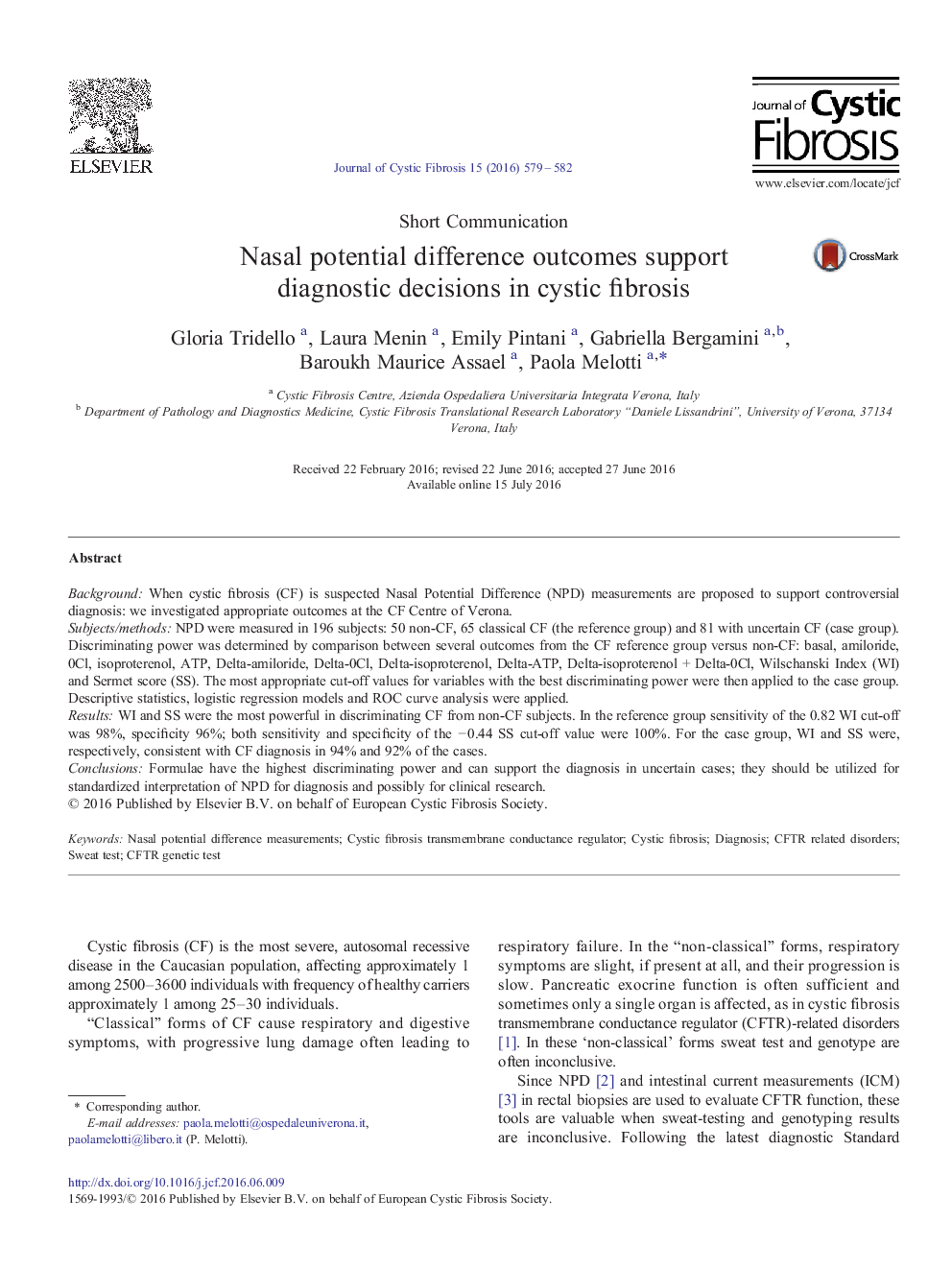| Article ID | Journal | Published Year | Pages | File Type |
|---|---|---|---|---|
| 5724759 | Journal of Cystic Fibrosis | 2016 | 4 Pages |
BackgroundWhen cystic fibrosis (CF) is suspected Nasal Potential Difference (NPD) measurements are proposed to support controversial diagnosis: we investigated appropriate outcomes at the CF Centre of Verona.Subjects/methodsNPD were measured in 196 subjects: 50 non-CF, 65 classical CF (the reference group) and 81 with uncertain CF (case group). Discriminating power was determined by comparison between several outcomes from the CF reference group versus non-CF: basal, amiloride, 0Cl, isoproterenol, ATP, Delta-amiloride, Delta-0Cl, Delta-isoproterenol, Delta-ATP, Delta-isoproterenol + Delta-0Cl, Wilschanski Index (WI) and Sermet score (SS). The most appropriate cut-off values for variables with the best discriminating power were then applied to the case group. Descriptive statistics, logistic regression models and ROC curve analysis were applied.ResultsWI and SS were the most powerful in discriminating CF from non-CF subjects. In the reference group sensitivity of the 0.82 WI cut-off was 98%, specificity 96%; both sensitivity and specificity of the â 0.44 SS cut-off value were 100%. For the case group, WI and SS were, respectively, consistent with CF diagnosis in 94% and 92% of the cases.ConclusionsFormulae have the highest discriminating power and can support the diagnosis in uncertain cases; they should be utilized for standardized interpretation of NPD for diagnosis and possibly for clinical research.
